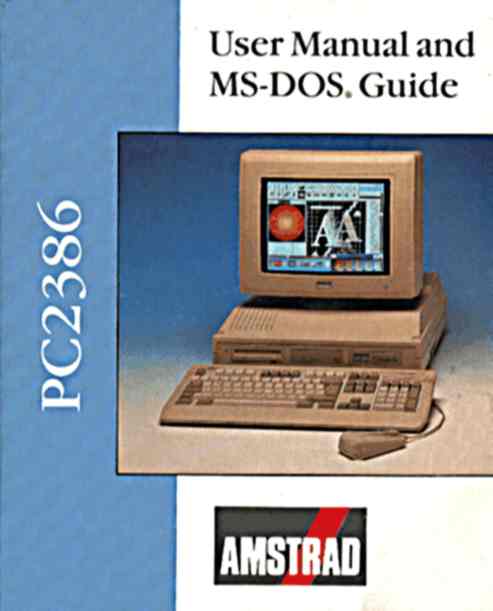| PC-1512 and the Fall of Amstrad |
| Written by Historian | |||||||
Page 3 of 3
Revolutionary designThe design of the 1512 was revolutionary. Looking back at it from today’s perspective it doesn’t look so very different but it was. It had a plastic case, the video, floppy disk controller, parallel, serial and mouse ports all integrated on the main PCB. When you bought an IBM, or another clone PC, generally all of these facilities were extra and provided as plug-in expansion cards. The PC-1512 only needed three expansion slots as a result. It also had the power supply built into the monitor, which allowed Amstrad to dispense with a cooling fan – something that would later be regarded as a mistake, although not for technical reasons. The cheapest of the range was priced at £399 with a single floppy disk drive and the most expensive was £949 with a 20MByte hard disk. This was very, very cheap compared to the cheapest IBM machine at £1,429 and the true price difference based on comparing like with like was certainly much greater. The PC-1512 was an affordable IBM PC and Alan Sugar thought he would sell thousands. He stated that his target was 70,000 a month in the first instance. The PC-1512 was initially received as the revolutionary machine it was. It was simply the best value for money available. However Amstrad was shocked to discover that they were selling more of the hard disk model than cheaper machine. Users soon learned that the extra money was well worth it. Unfortunately there just weren’t enough hard disk models in production and a shortage developed. Problems real and imaginarySoon after it was launched the PC-1512 ran into a barrage of unexpected criticism. Rumours started that it was unreliable because it didn’t have a fan and so over heated. ICI were quoted as having rejected the machine because of this problem. It was assumed that the machine lacked a fan because it was an Amstrad attempt to cut costs when in fact it didn’t have a fan because the power supply being in the monitor made one unnecessary. Still the stories grew in number and the reputation of the PC-1512 suffered. Finally Alan Sugar decided to do something about it. After repeatedly telling journalists that the fan wasn’t necessary he gave up -
“I’m a realistic person and we are a marketing organization, so if it’s the difference between people buying the machine or not, I’ll stick a bloody fan in it. And if they want bright pink spots on it I’ll do that too. What is the use of me banging my head against a brick wall and saying ‘You don’t need the damn fan, sunshine’?
Fans appeared in hard disk based PC-1512’s thereafter and pink spots appeared in many surprising places including Amstrad’s offices and computer magazines. The fitting of a fan didn’t entirely solve the problem and Amstrad threatened to sue more than one company for making comments about the reliability of the machine – including the BBC. Amstrad also wasn’t managing to sell the PC-1512 into large corporations. The reason was partly the rumours of unreliability and partly that the dealer margins were so low that there was no incentive to provide support. Large companies preferred to pay more and have a higher level of service. It also seems likely that the rumours of unreliability were being fuelled by IBM’s large sales force selling directly into the corporate market. IBM was well known for such tactics in the past. PC-1640In June 1987 Amstrad launched the PC-1640 with more memory and a higher resolution EGA display built in but this was probably the company’s high point. The PC market was changing very fast with new processors like the 286 and the 386 and IBM had introduced a whole new machine architecture in the form of the PS/2. Amstrad couldn’t clone the PS/2 unless it paid a high licensing fee to IBM.
Instead of copying the PS/2 they designed the PC2000 series. This was an innovative machine. It used a very flexible architecture that made some sense of the complex memory systems that were current – XMS, EMS, expanded and extended memory. They also had built in VGA graphics adapters and were suitable successors to the integrated design of the PC-1512/1640. Initially the 2000 series receive good reviews and then the problems started. Hard disk drives started to fail at a rate that was unacceptable. Alan Sugar recalled all of the 2000 series and tried to correct the problem by fitting new disk controllers. The actual fault was in a batch of disk drives supplied to Amstrad by Seagate. Despite the fact that everyone said that Amstrad had done the right thing in responding quickly to the problem the damage was done and the Amstrad name was associated with faulty computers. After the 2000 series they produce an increasing number of fairly standard PCs – the 3000 series, the 4000 and so on. Nothing was ever as successful as the PC-1512/1640 and nothing was ever as innovative as the 2000 series.
In 1997, Amstrad PLC was wound up, its shares being split into Viglen and Betacom instead. Betacom PLC was then renamed Amstrad PLC. Today Amstrad Ltd is a 100% subsidiary of BSkyB Plc. The company designs, develops and manufactures set top boxes for BSkyB and Sky Italia.
If you are interested in how Amstrad started and developed prior to the Amstrad PC see which include more of Alan Sugar's story Alan Sugar - Amstrad and the CPC
<ASIN:0563522380> <ASIN:1844549291> |
|||||||
| Last Updated ( Thursday, 10 October 2019 ) |


